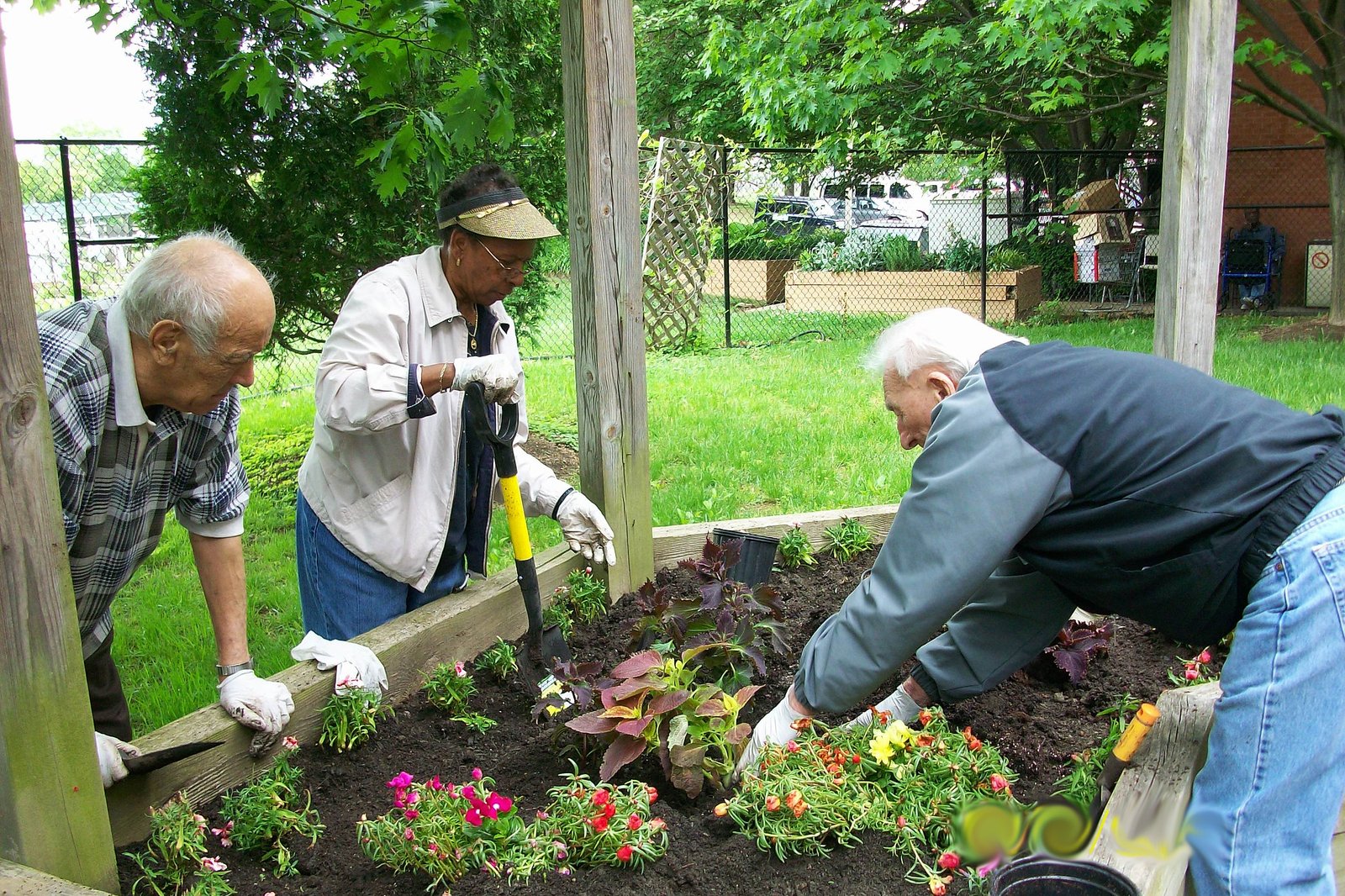In today’s fast-paced and ever-changing world, the quality of life (QoL) has become a significant concern for individuals and communities alike. While advancements in technology, healthcare, and education have positively impacted our daily lives, many people still struggle to achieve a good quality of life. Quality of life encompasses various aspects, including physical and mental health, emotional well-being, social relationships, financial stability, and a sense of purpose. But how can we improve the quality of life for individuals in today’s society? This article aims to explore practical ways to enhance individual well-being and create an environment conducive to better quality of life for everyone.
Key Takeaway
To improve the quality of life, we must adopt a holistic approach that addresses various aspects of well-being, including health, social connections, financial stability, and personal fulfillment. By focusing on these areas, we can enhance the well-being of individuals and build a stronger, more supportive society for everyone.
What is Quality of Life?
Before diving into ways to improve it, it’s important to understand what constitutes “quality of life.” Quality of life is a multifaceted concept that includes subjective measures of happiness and satisfaction with life. The elements that typically define quality of life include:
Physical Health: The state of one’s body and ability to perform daily tasks comfortably.
Mental and Emotional Health: The ability to cope with stress, handle emotions, and maintain psychological well-being.
Social Relationships: The quality and depth of personal relationships with family, friends, and communities.
Financial Security: Having sufficient resources to meet one’s needs and desires, as well as feeling secure about the future.
Environmental Quality: The condition of one’s living space and the surrounding environment, including factors such as clean air, safety, and access to resources.
Personal Fulfillment: The sense of purpose, achievement, and fulfillment in life.
Improving any of these aspects can positively impact an individual’s quality of life. However, this improvement requires a multifaceted approach, incorporating efforts at both the individual and societal levels.
Ways to Improve Quality of Life
Prioritize Physical and Mental Health
Improve Access to Healthcare

One of the fundamental ways to improve quality of life is by ensuring access to healthcare. Individuals should have access to both physical and mental healthcare services. Governments and organizations can help by providing affordable healthcare programs that ensure everyone has access to necessary medical attention. Regular check-ups, preventative care, and mental health support can go a long way in maintaining health and well-being.
Promote Healthy Lifestyles
Healthy lifestyles—such as regular exercise, balanced diets, sufficient sleep, and stress management techniques—can significantly boost overall well-being. Encouraging physical activity, whether through public spaces for exercise or community events, is essential for maintaining a healthy body. Similarly, mental health initiatives like mindfulness, meditation, therapy, and stress-relief programs can help individuals manage mental and emotional challenges.
Address Mental Health Stigma
Mental health remains one of the most stigmatized aspects of well-being. Many people still hesitate to seek help due to fear of judgment. Encouraging open conversations and understanding about mental health can help individuals seek support without feeling ashamed. Mental health professionals, as well as peer support networks, can play a critical role in reducing the stigma and promoting mental health care.
Enhance Social Connections
Foster Strong Social Networks
Humans are inherently social creatures, and social relationships are crucial to our well-being. Having strong personal connections with family, friends, and communities can provide emotional support and a sense of belonging. Communities can organize social events and create spaces where individuals can interact and build meaningful relationships. This, in turn, reduces feelings of loneliness and isolation.
Encourage Volunteerism and Community Involvement
Being part of a larger community and contributing to society through volunteer work or civic participation can give individuals a sense of purpose and fulfillment. Volunteering offers social interaction and a sense of accomplishment, both of which positively impact mental well-being. Additionally, it enhances social cohesion and strengthens communities, making them more supportive and inclusive.
Financial Stability and Economic Opportunities
Address Poverty and Inequality

Financial stability is a significant determinant of quality of life. Ensuring that all individuals have access to a living wage, financial resources, and opportunities to improve their economic standing is essential. Policies and programs aimed at reducing poverty, addressing income inequality, and creating employment opportunities are crucial to providing a stable financial foundation for individuals.
Promote Financial Literacy
Financial literacy programs can empower individuals to manage their finances effectively. Education on budgeting, saving, investing, and debt management can help individuals make informed decisions about their money. Financial security leads to reduced stress and increased satisfaction with life, which contributes to better overall well-being.
Create Safe and Supportive Environments
Improve Public Infrastructure
A quality living environment significantly influences quality of life. Communities should be designed to promote safety, accessibility, and sustainability. Infrastructure improvements such as clean and safe streets, affordable housing, and access to basic services like water and electricity are essential. Moreover, creating green spaces, parks, and recreational areas encourages physical activity and mental relaxation.
Foster Safety and Security
Living in an environment where individuals feel safe and secure enhances mental health. Governments and law enforcement should work together to create safe communities, free from violence, crime, and threats. Encouraging community-based policing and the presence of supportive social services can reduce fear and create a sense of safety.
Personal Fulfillment and Growth
Encourage Lifelong Learning

Education plays a vital role in improving quality of life. Encouraging lifelong learning, whether through formal education or self-directed learning, helps individuals feel intellectually stimulated and engaged with the world around them. Furthermore, access to higher education and skill development programs enables people to unlock better career opportunities and personal growth.
Support Work-Life Balance
The modern world is characterized by constant hustle and stress. Achieving a work-life balance is essential for mental and emotional well-being. Companies should offer flexible work schedules, adequate vacation time, and remote work opportunities to help employees balance their professional and personal lives. Similarly, individuals should prioritize time for hobbies, rest, and family to maintain a healthy equilibrium.
Cultivate a Sense of Purpose
Having a clear sense of purpose can significantly enhance life satisfaction. Whether through work, family, creative pursuits, or community involvement, individuals should have opportunities to engage in meaningful activities. Society should encourage individuals to explore their passions, set personal goals, and create a vision for their future.
Here are more detailed topics related to Quality of Life that explore different angles and aspects of the subject:
How Does Access to Healthcare Affect Quality of Life?
- Description: This topic would explore the connection between access to healthcare and the overall quality of life for individuals. It could examine how regular check-ups, timely medical interventions, and mental health services influence life satisfaction and longevity.
- Key Points:
- The impact of preventive care and early diagnosis on health outcomes.
- How disparities in healthcare access affect quality of life for marginalized communities.
- The role of mental health services in improving emotional well-being.
The Role of Environment in Enhancing Quality of Life
- Description: This topic would focus on how our physical environment, including living conditions, public spaces, and pollution, impacts our quality of life. It could include topics like clean air, access to green spaces, and noise pollution.
- Key Points:
- How living in clean, safe, and green environments promotes mental and physical health.
- The benefits of urban planning that integrates nature and sustainability for well-being.
- How environmental factors like air quality and noise pollution affect daily life.
How Technology Is Shaping Our Quality of Life
- Description: Technology has both positive and negative effects on the quality of life. This article could discuss the impact of technology on communication, healthcare, work-life balance, and leisure activities.
- Key Points:
- Positive effects of technology, like improving healthcare outcomes and facilitating remote work.
- Negative aspects of technology, such as social isolation, digital addiction, and stress.
- How to leverage technology for better quality of life without it overwhelming our lives.
The Importance of Social Connections in Improving Quality of Life
- Description: This article would discuss how building and maintaining social connections—family, friends, community—contributes to improving mental health, reducing loneliness, and providing a support network.
- Key Points:
- The role of social relationships in reducing the risk of depression and anxiety.
- How social support systems improve resilience and emotional well-being.
- Ways to foster social connections in an increasingly isolated world.
How Can Financial Security Improve Quality of Life?
- Description: Financial security is a key factor in determining overall well-being. This topic would cover how financial stability, access to resources, and economic opportunities lead to improved mental and emotional health.
- Key Points:
- The role of stable income in reducing stress and anxiety.
- Financial literacy and planning as tools for better quality of life.
- The impact of socioeconomic inequality on life satisfaction and well-being.
Work-Life Balance: Key to Improving Quality of Life
- Description: This article would discuss the importance of balancing work demands with personal life to reduce stress and improve overall well-being.
- Key Points:
- How work overload and burnout diminish quality of life.
- The benefits of flexible work schedules, remote work, and paid time off.
- Practical strategies to achieve a better work-life balance in today’s fast-paced world.
The Role of Education in Enhancing Quality of Life
- Description: This topic could explore the importance of education in improving quality of life, focusing on both academic and life skills. It could examine how education empowers individuals to pursue meaningful careers and make informed life decisions.
- Key Points:
- How access to education leads to better job opportunities, which in turn improves financial stability and quality of life.
- Lifelong learning as a means to stay mentally engaged and socially active.
- The importance of emotional intelligence education in fostering healthier interpersonal relationships.
The Impact of Nutrition and Diet on Quality of Life
- Description: This article would focus on how nutrition plays a critical role in determining both physical and mental health, which directly affects quality of life.
- Key Points:
- The connection between diet and mental health (e.g., depression, anxiety).
- How nutritious food boosts energy, physical health, and overall well-being.
- Practical advice for maintaining a balanced diet in a busy lifestyle.
Quality of Life in Aging Populations: How to Improve Senior Well-being
- Description: This article would explore the unique challenges faced by older adults and suggest strategies for improving their quality of life, such as access to healthcare, social inclusion, and mental stimulation.
- Key Points:
- The impact of social isolation and loneliness on older adults’ quality of life.
- How community programs and senior services can enhance well-being.
- Importance of physical activity and mental engagement in the aging process.
How Urbanization Affects Quality of Life: Benefits and Challenges
- Description: Urbanization offers many opportunities but also presents challenges that can affect individuals’ quality of life. This article could look at both the positive and negative aspects of living in urban environments.
- Key Points:
- The benefits of urban living, such as access to healthcare, education, and employment.
- The challenges, such as noise pollution, overcrowding, and lack of green spaces.
- Urban planning solutions to mitigate the negative aspects of city living.
Mental Health and Its Direct Impact on Quality of Life

- Description: Focusing specifically on mental health, this article would explore how mental well-being impacts overall life satisfaction and the steps that can be taken to improve mental health outcomes.
- Key Points:
- How conditions like depression, anxiety, and stress diminish quality of life.
- The importance of early intervention, therapy, and support networks in mental health.
- Coping strategies to improve emotional well-being and life satisfaction.
How Does Work Environment Influence Quality of Life?
- Description: This article would analyze how various aspects of a work environment, such as job satisfaction, company culture, and stress levels, influence an individual’s overall quality of life.
- Key Points:
- The link between job satisfaction and life satisfaction.
- The effects of toxic work environments on mental health and life quality.
- Strategies for improving workplace well-being through supportive policies and practices.
How Can Government Policies Improve the Quality of Life for Citizens?
- Description: This article would explore how different government policies—such as healthcare, housing, education, and employment—can have a significant impact on the quality of life for citizens.
- Key Points:
- The role of social safety nets in reducing poverty and improving quality of life.
- The impact of accessible healthcare and education systems on public well-being.
- Government strategies that promote work-life balance and social equity.
The Connection Between Physical Activity and Quality of Life
- Description: This article would focus on the relationship between physical exercise and the quality of life, highlighting how regular physical activity improves both physical health and emotional well-being.
- Key Points:
- The science behind how exercise improves mental health by releasing endorphins and reducing stress.
- The role of regular physical activity in preventing chronic diseases.
- Tips for incorporating exercise into a busy schedule for better life satisfaction.
How Arts and Culture Enrich Quality of Life
- Description: This article would explore how engaging with art, culture, and creativity—whether through music, visual art, theater, or dance—enhances individuals’ emotional well-being and provides personal fulfillment.
- Key Points:
- How participating in cultural activities improves mental and emotional health.
- The importance of artistic expression in providing a sense of purpose and joy.
- Community-based art programs as a means to strengthen social bonds and cultural appreciation.
The Role of Leisure and Recreation in Enhancing Quality of Life
- Description: Focusing on the importance of downtime, this article would discuss how leisure and recreational activities, such as hobbies, vacations, and sports, contribute to well-being.
- Key Points:
- How leisure activities reduce stress, promote relaxation, and improve mental health.
- The positive effects of engaging in hobbies and sports on emotional and physical well-being.
- Ways to incorporate more leisure time into a busy lifestyle for better life satisfaction.
How Does Community Engagement Impact Quality of Life?
- Description: This article would explore how active participation in one’s community, through volunteer work, local events, and civic duties, leads to improved quality of life and personal fulfillment.
- Key Points:
- How community involvement fosters a sense of belonging and purpose.
- The positive effects of volunteering on mental and emotional health.
- Building stronger communities that enhance the collective quality of life.
How Education Impacts Quality of Life Across Generations
- Description: This topic would explore how education not only improves life prospects for individuals but also elevates the quality of life for future generations through better opportunities and healthier living conditions.
- Key Points:
- How education equips individuals with the skills and knowledge to improve their life outcomes.
- The generational impact of education on income, health, and well-being.
- How accessible education systems contribute to long-term societal improvements.
Also Read: Why Are Family Dynamics Crucial for Effective Communication?
Conclusion
Improving the quality of life for individuals in today’s society requires a multifaceted approach that addresses both individual and societal factors. By focusing on physical and mental health, strengthening social relationships, ensuring financial stability, and promoting personal fulfillment, we can create a society where everyone has the opportunity to lead a healthy, happy, and meaningful life. It is not only the responsibility of governments and organizations to foster these changes, but also individuals who can contribute positively to their communities.
Frequently Asked Questions FAQs
What is quality of life?
Quality of life refers to the overall well-being and satisfaction with life, which includes physical and mental health, social relationships, financial stability, and personal fulfillment.
How can physical health impact quality of life?
Good physical health enables individuals to perform daily activities with ease and feel energized. It also reduces the risk of chronic diseases, enhancing longevity and overall life satisfaction.
Why is mental health important for quality of life?
Mental health affects how individuals think, feel, and behave. Good mental health enables people to cope with stress, build meaningful relationships, and contribute positively to society, enhancing their overall quality of life.
What role does social support play in quality of life?
Social support provides emotional and practical assistance, fostering a sense of belonging and reducing feelings of isolation. Positive social relationships are essential for mental health and overall well-being.
How does financial stability affect quality of life?
Financial stability provides the resources needed to meet basic needs, access healthcare, and enjoy leisure activities. It reduces stress and anxiety related to financial insecurity, enhancing life satisfaction.
What can governments do to improve quality of life?
Governments can improve quality of life by ensuring access to healthcare, education, affordable housing, social services, and by promoting policies that address income inequality, safety, and environmental sustainability.
How can individuals improve their quality of life?
Individuals can improve their quality of life by prioritizing health and well-being, fostering strong relationships, pursuing lifelong learning, and engaging in meaningful activities that align with personal values and goals.



